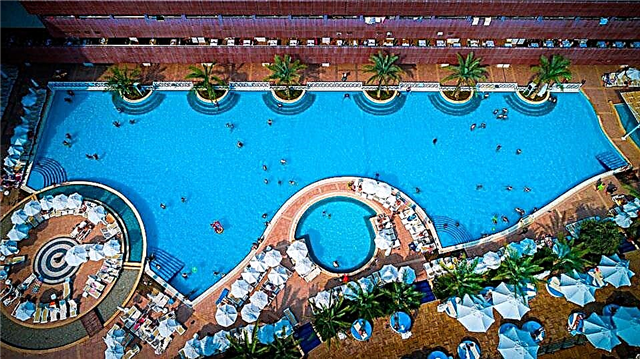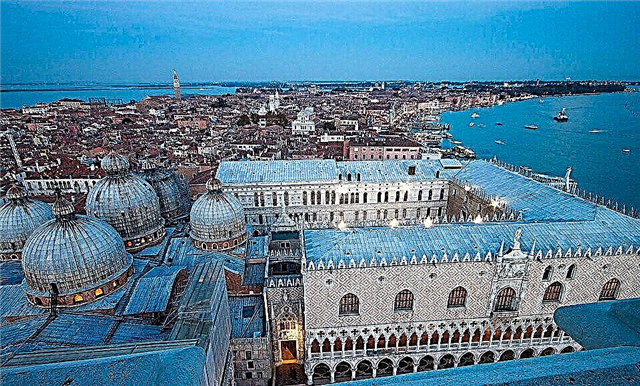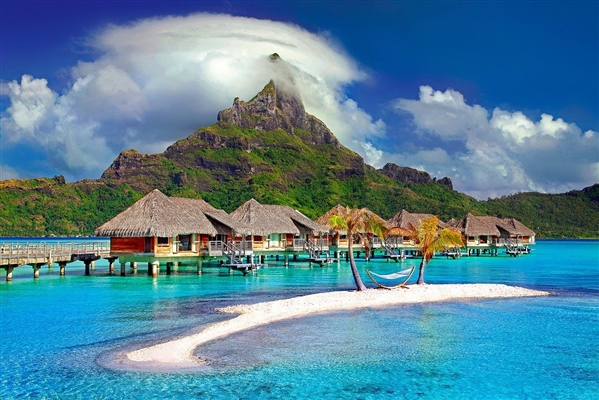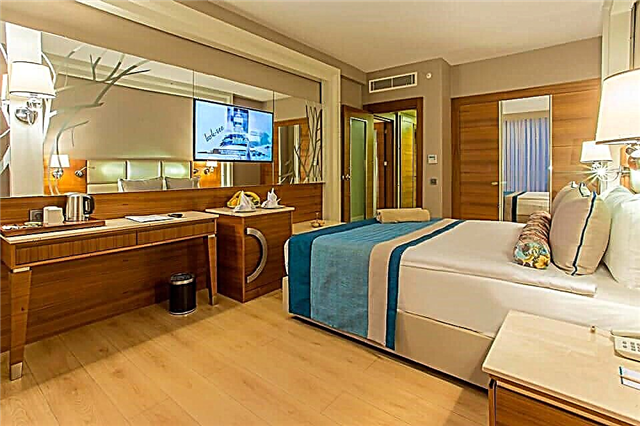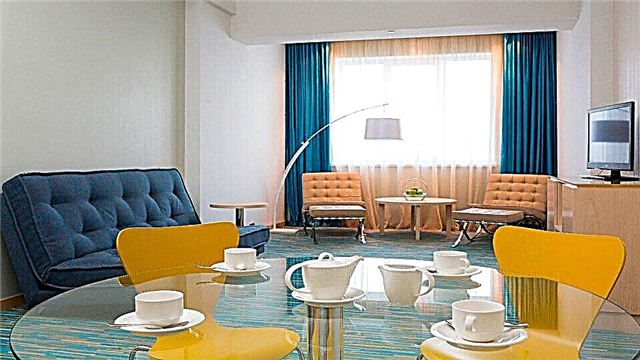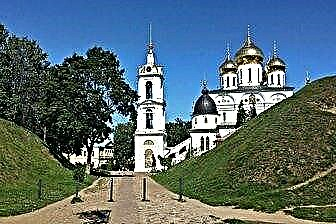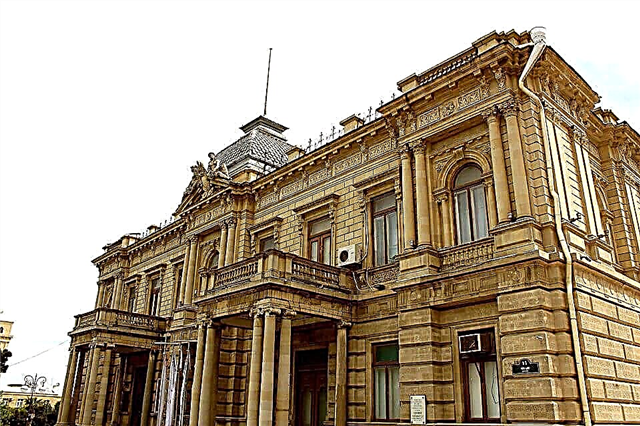If you are planning to visit Baku, the capital of Azerbaijan, you can only be envied. This city has something to see! The sights of Baku are numerous; it will take not a day or two to get to know them. We recommend spending at least a week here. A brief description of the most interesting places will not replace sightseeing tours and long walks around the city, but it will allow you to draw up an optimal route and decide which places you want to visit first.
Primorsky Boulevard
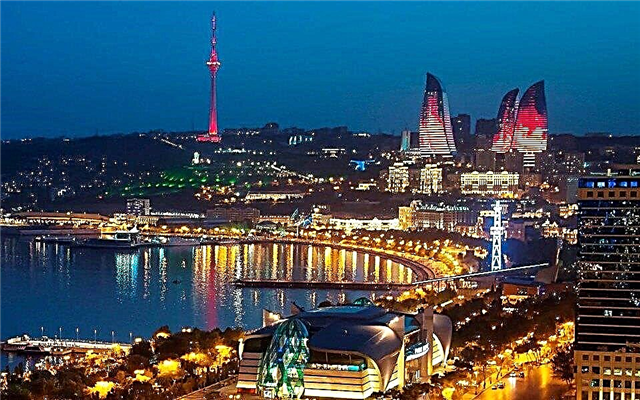
Primorsky Boulevard is very long, not everyone is able to walk it from end to end - its length is 16 km. And yet, you must definitely visit here. This boulevard is more than 100 years old, and during the walk you can see many sights. This is a wonderful fountain that has no analogues in the world; in the evenings it will delight you with a light and music performance. "Ferris wheel", allowing you to admire the city from a bird's eye view, children's theater, and much more.
The creation and arrangement of Primorsky Boulevard in the capital of Azerbaijan began in 1909. The best specialists were involved in the project and directly in the work. The implementation of the architects' plan took about 2 decades. In the 2000s, the boulevard found a second life - during the reconstruction it was given a modern look. In addition, there are many ornamental plants blooming and fragrant, so that a significant part of the boulevard resembles a garden. Children will love the Bulsur amusement park. There are also many cafes where you can taste Azerbaijani dishes.
The old town of Icheri Sheher
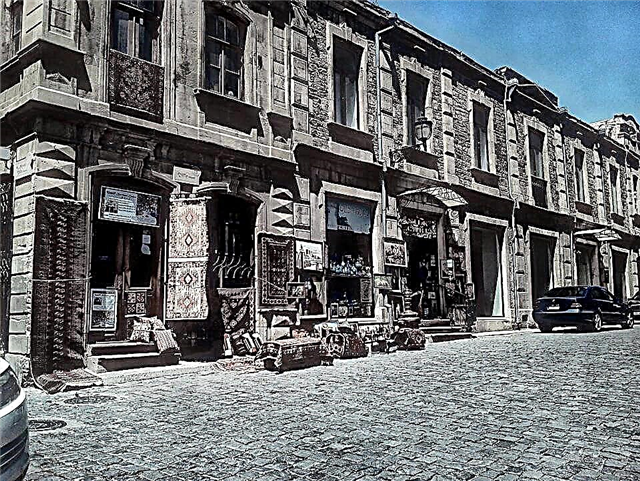
Only here, in the oldest part, you can feel the spirit of this city. At the same time, you will feel as if you were in a fairy tale, or transported by a time machine several centuries ago. It was here that the once exotic "abroad" was filmed, the overseas city, where the heroes of the film "The Diamond Arm" fall. Narrow streets and high walls - once you get here, you too can get lost, so it's better to stock up on a map of the Old City in advance.
Icheri Sheher is located on a hill, surrounded by massive fortress walls, the height of which exceeds 8 m. People lived in these places with a fertile climate since ancient times, already in the 1st century AD. ships moored here, later craft and trade began to actively develop here, and it was here that ruler Shirvanshah founded his residence. Then the fortress walls appeared. You will see caravanserais and mosques, ancient baths and the Market Square. In addition, there are masterpieces of architecture - the Palace of the Shirvanshahs and the Maiden Tower. In a word, you can spend a whole day here.
Maiden's Tower
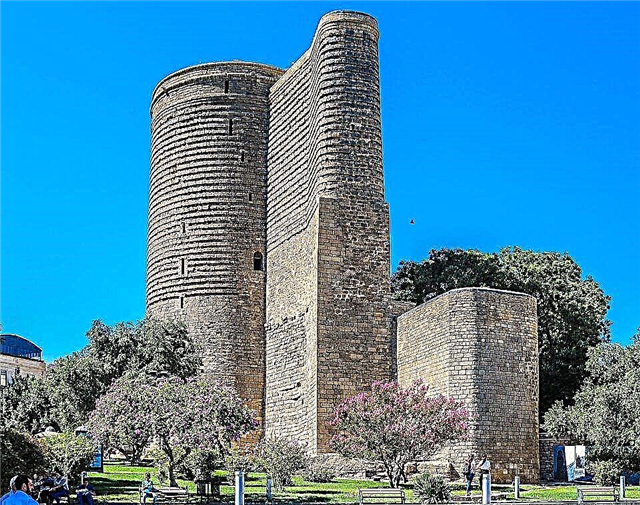
The most interesting building, which is located on the territory of the old city. Moreover, scientists still have not been able to determine the exact age of the tower. According to various versions, it was erected between the 1st and 12th century AD. The height of the tower is 28 m, diameter is 16 m. The walls are very thick - up to 5 m. Inside there are 8 tiers, there is also a well here. There is still no consensus as to why the tower was built. Some scholars believe that it was a religious building. This hypothesis is supported by the fact that on the day of the winter equinox, the rising star casts rays into the central window of the tower.
It is assumed that people at that time worshiped the sun or fire. In the Middle Ages, the tower played the role of an impregnable fortress, and then became a lighthouse. A beautiful legend tells of a girl who threw herself from a tower to escape the harassment of her own father. Today there is a museum where you can see archaeological finds, get acquainted with virtual books about the tower. And at the very top there is an observation deck, from where a wonderful view of the city opens.
Park "Little Venice"
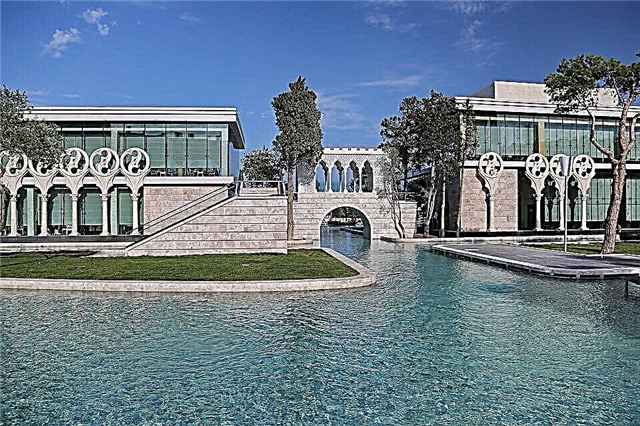
It’s hard to believe, but when you come to this corner, you can feel yourself in the most romantic city in Italy. Park "Little Venice" is part of the Seaside National Park. The complex includes 3 large islands and several small ones. Fountains, tunnels and bridges are all tastefully executed, and the gondolas were indeed brought here from Italy. They are controlled, as it should be, by gondoliers.
Would you like to sail through the Little Venice canals? Such a trip will bring special pleasure to children and couples in love. There are restaurants and cafes in the park. Here you can taste both Azerbaijani and European dishes.
Upland park
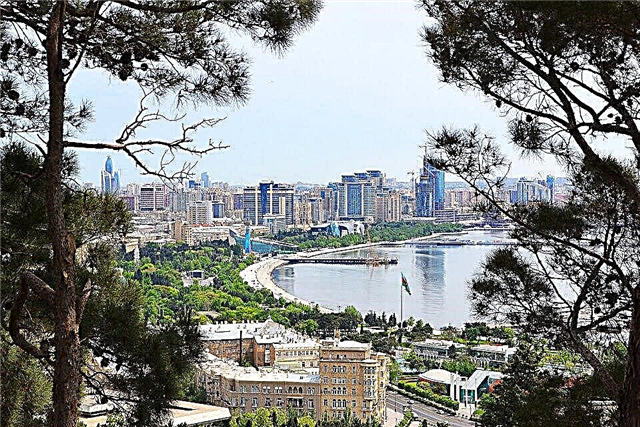
The Upland Park is one of the favorite resting places of Baku people. Green alleys, observation platforms with a view of the capital of Azerbaijan, secluded corners where you can relax - all this gives the park a unique charm. Once upon a time, English soldiers who died in Baku in 1918 were buried here. Today only a memorial stone has survived. Another boulder is still covered with legends. It is believed to heal infertility in women. Many Azerbaijani women came here, cherishing the hope of becoming a mother. Under Soviet rule, many objects appeared on the territory of the park.
A monument to Sergei Kirov was erected here. In 1960, a funicular appeared, with which you can climb to the observation deck. For a long time, the park had amusement rides, and the Green Theater became a local attraction. Built in the 60s, it was renovated in 2007, and in the summer you can watch performances by famous artists. In the 80s of the 20th century, the Gulustan palace was erected in the park.
And in 1990, those who died on Freedom Square were buried on the territory - more than 170 people. After that, the Eternal Flame was lit here, and various entertainment centers were removed from the park. But Upland Park still did not become a place of mourning. There are always a lot of tourists and locals who want to walk along the shady alleys.
Khagani Garden
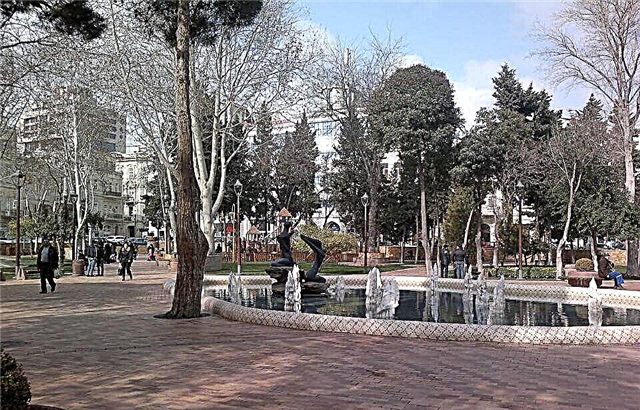
This is one of the oldest parks in the city. It is small in size - up to 0.8 hectares, and its current name makes us turn to the memory of the Persian poet. The pearl of the garden is the pool with a sculptural group depicting graceful girls - "Three Graces". Trees, shrubs and flower gardens give the park a particularly elegant look. The park was laid out in the 19th century and was then called the Mariinsky.
It has become a veritable oasis in an arid city. New green spaces appeared here regularly. During the years of Soviet power, the park was expected to be renamed, now it was called "The Garden of January 9". After the Great Patriotic War, the "oasis" had to be restored. The current name of the park was given after Azerbaijan gained independence.
Baku Crystal Hall
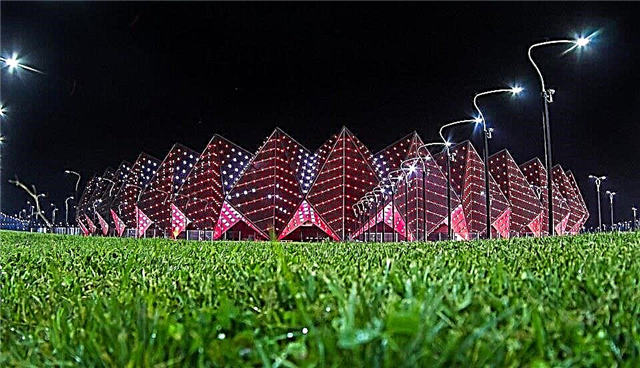
This hall cannot be forgotten. The history of its appearance is also remarkable. When Azerbaijani singers won the Eurovision Song Contest, and next time Baku was supposed to host the contestants, they began to build a new arena specifically for this. Another popular name for the hall is "Crystal Hall". Its facade is made in the form of a mineral with edges.
Thousands of LED lamps are built into the steel structures, and in the dark, the Crystal Hall literally shimmers with lights, and the floodlights installed on the roof line the sky with bright beams of light, reminiscent of strings. The hall can accommodate up to 27 thousand people. And after Eurovision-2012, it has already hosted famous singers and artists many times, and prestigious competitions have also been held here. So it is possible that while you are resting, some amazing concert will take place in the Crystal Hall.
Bath Haji Gaiba
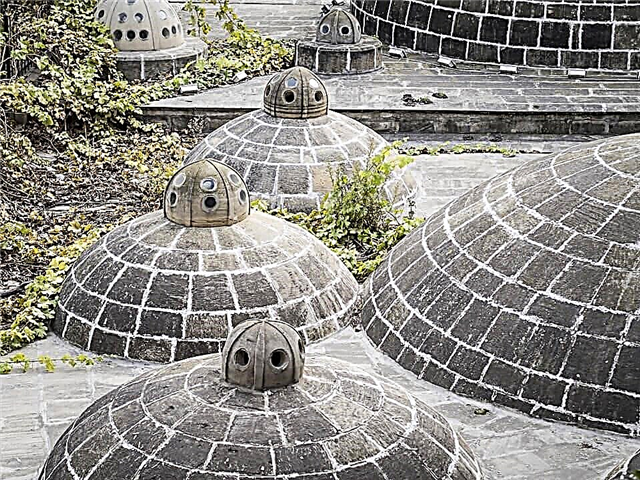
The old bathhouse is located not far from the Maiden Tower. Baths - or hammams - were very common in the East. Here people not only washed themselves, but also had leisurely conversations and made deals.The Haji Gaiba bathhouse was built in the 15th century at the place where trade routes crossed. Time passed. The building was covered with sand, and if not for the archaeologists who discovered this landmark in the middle of the 20th century, no one would have known about its existence. Of course, today the bathhouse is not working, but you can go in and inspect it from the inside, take photos.
It makes sense to come here even in the evening, as the bathhouse is beautifully illuminated and looks especially impressive. There are 3 rooms inside the hammam. An entrance portal, a kind of hallway, a dressing room and a bathhouse itself. The latter is built in the shape of an octagon. There was hot and cold water in the pools. The floors were heated by hot steam circulating through special channels under the tiles. After washing in the locker room, we drank tea and talked.
Baku Ferris wheel
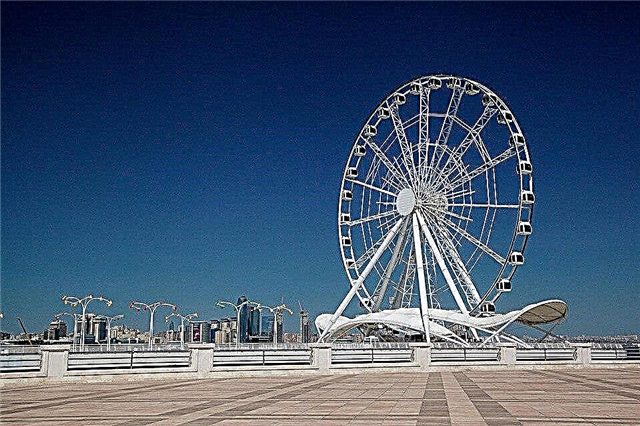
Here it is called the "Eye of Baku". Sitting in a cabin (gondola), you will climb 60 m. All gondolas are closed, they have air conditioning, so you can ride the attraction at any time - neither heat nor rain will interfere. And the view from here is simply mesmerizing. An unusual Carpet Museum, the remains of an ancient fortress, houses and parks - "The Eye of Baku" will allow you to see everything.
In total, there are 30 gondolas on the wheel, each can seat up to 8 people. The period of complete rotation of the wheel takes up to 30 minutes. The construction of the wheel began in 2013. The project was developed by the Dutch company Dutch Wheels. In February 2014, the new attraction was successfully tested, and on March 10, the wheel was "started". The wheel is very popular today. Children under 6 years old can ride the attraction for free.
Palace of the Shirvanshahs
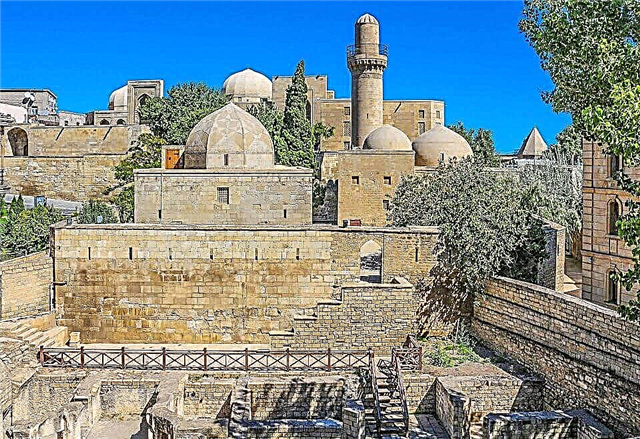
This is a real treasure of Azerbaijan. Moreover, tourists inspect not only the palace itself, but also the whole complex, including the Divan Khane courtyard and the tomb, the mosque and the bathhouse, as well as the mausoleum of the court scientist. The construction took a long time. New buildings appeared here over the course of 3 centuries - from the 13th to the 16th century. However, the result is a very harmonious ensemble. The architects treated the work of their predecessors with care, and a real masterpiece came out.
To see the palace, you need to come to the old part of the city. The octagonal ceremonial hall has been preserved. You can also see spiral staircases and over 50 rooms. Finds of archaeologists are housed inside. A lot of them. These are weapons and dishes, jewelry and household items, musical instruments and coins. Even the famous Shemakha carpets have survived. In general, the palace makes a grandiose impression, and you need to come here for the whole day. Moreover, there are enough cafes nearby to choose your taste and have a snack.
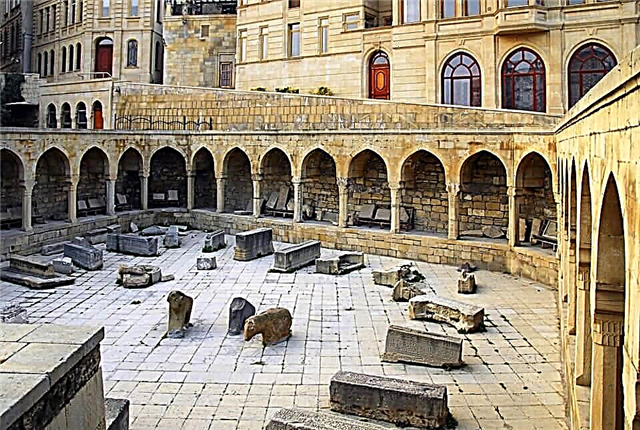
Divan-khane is a small enclosed courtyard. In the center of it there is a structure in the form of an octagonal, its vault is supported by columns. The Middle Ages left many secrets. It is still unclear about Divan Khan - what was the rotunda-pavilion used for? Was this place a mausoleum? Or was it the court? Or maybe they were conducting state negotiations? The location seems to be the most suitable for the latter purpose. You cannot approach the pavilion unnoticed, you cannot overhear ... Perhaps, Divan-khane seems too modest - after all, there are only stone slabs here now.
But you need to imagine what it was like once, when there were handmade carpets, servants glided silently, bringing tea and sweets to their masters. In a word, history comes to life here. Another interesting place on the territory of the Shirvanshahs' palace is the mausoleum of Seyid Yahya Bakuvi. Its other name is "Dervish Mausoleum", it was built in the second half of the 15th century. To see the mausoleum, you need to go down the steep stairs, which is located opposite the Divan Khane. At one time, Seyid Yahya Bakuvi played a large role at the court, without him not a single important issue was resolved. But how!
After all, he was not only a philosopher and physician, but also a court astrologer. And people (and rulers as well) firmly believed that no important issue could be resolved without the "approval of the stars". You can enter a small opening, carefully go down and inspect the grave of the scientist. Directly in the mausoleum itself, you will see an unusual interior, interesting vault paintings. If you speak loudly here, you will hear your echo. An arched passage used to lead to the mosque. Now she is gone, she burned out during the fire. Noble people were buried on the territory of the mausoleum. Many gravestones have survived.
Mukhtarov Palace
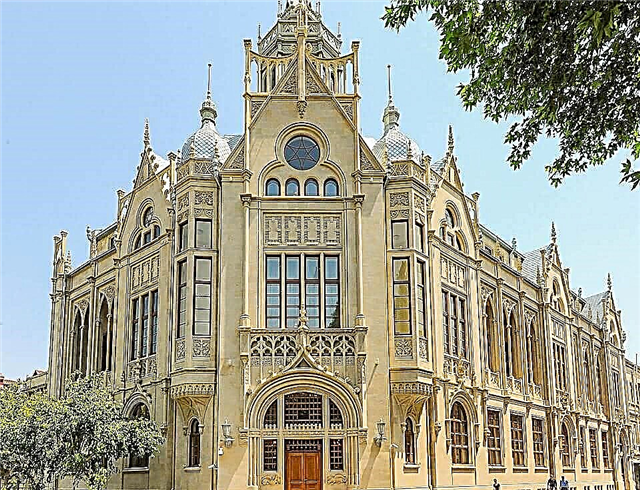
There is a completely extraordinary building built in the Gothic style. Now the registry office is located here, and the house itself is called the "Palace of Happiness". You need to come here not only to admire the work of the architect Joseph Ploshko. The history of the city and romantic love are closely associated with this building. The local millionaire oil industrialist Murtuza Mukhtarov married a girl from a noble Ossetian family - Liza Tuganova. In Vladikavkaz, native to Liza, Murtuza built a mosque as a gift to his bride. And after a honeymoon trip, during which his wife liked one of the mansions in Venice, he gave her almost the same one in Baku.
Almost - because the architect did it in French rather than Italian style. The Mukhtarovs became famous for their charity work. They did a lot for tuberculosis patients, for children from poor families. The couple did not have their own children. After the revolution and the "victorious march of Soviet power", many rich people left the city. Liza Mukhtarov was also sent to a safe place. But he considered it a cowardice to leave his hometown.
The Red Army men came to him to confiscate the house. Mukhtarov ordered them to leave, and when they did not obey, he shot them with a revolver. He kept the last bullet for himself, but he fired unsuccessfully, and before his death he suffered for several more days. Lisa left her homeland, went to Marseille, and there her traces were lost. In the palace, at first, the Club of the Liberated Turkic Woman was opened, then the Museum-Reserve and, finally, the Wedding Palace.
Azerbaijan Carpet Museum
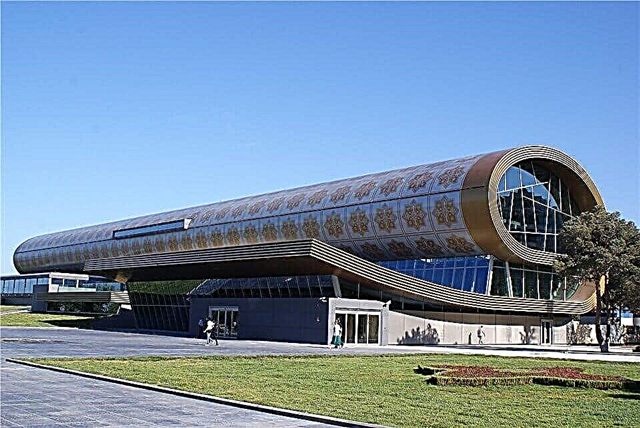
This unusual museum was opened in 1967, in the Juma Mosque, which is located in Icheri Sheheri. In 1992, the mosque again became the spiritual center of Muslims, and the Azerbaijan Carpet Museum temporarily moved to the Museum Center. In 2008, they began to build their own building for him. Even if you look at it from afar, it is impossible to make a mistake, and it immediately becomes clear what is here. Indeed, even the appearance of the museum resembles a rolled-up carpet.
Moreover, the creations of the hands of skilled craftswomen are exhibited not only here. The collections have already visited dozens of countries around the world. The fund now contains over 14 thousand exhibits. Among them there are truly unique carpets of the 17-18 centuries. You can also see many archaeological finds here. These are weapons and dishes, jewelry and embroidery, clothes and shoes. From the Bronze Age to the 19th. Samples of ornaments are kept in the museum, there is a training center, scientific work is underway.
Museum of Azerbaijani Literature
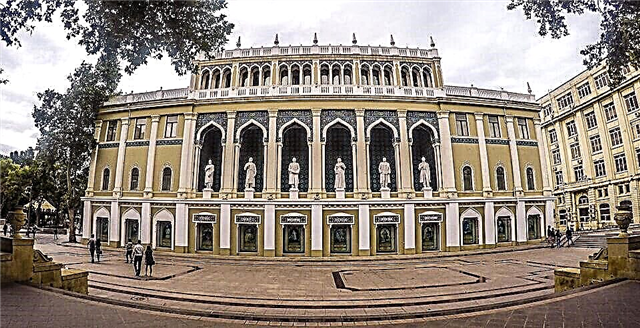
The museum, founded in 1939, bears the name of the classic of Persian poetry Nizami Ganjavi. It is located in the city center, near Fountain Square, in a 19th century building. The opening was timed to coincide with the 800th anniversary of the poet, and initially the museum was a memorial. But then his expositions expanded, and he turned into a literary one. The facade of the building is decorated with sculptures of writers and poets; inside you can see almost 25 thousand exhibits.
This is only what is exhibited, while the fund stores several times more. These are manuscripts, rare prints, illustrations, miniatures. The most valuable exhibit is a 15th century manuscript. This is Nizami's poem Iskander-name. There is a bookstore at the museum where you can buy books not only in Azerbaijani, but also in Russian and English.
Azerbaijan National Art Museum
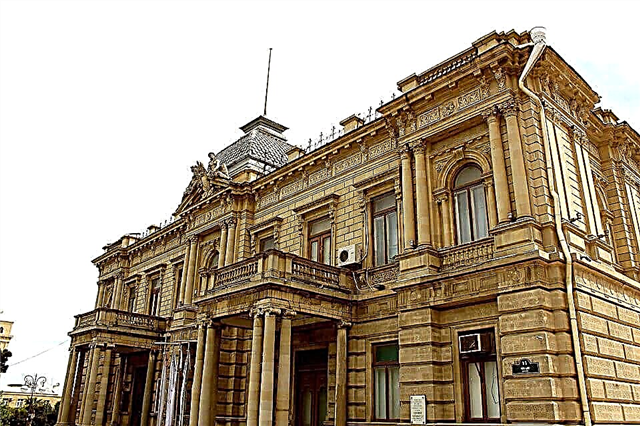
This is a real treasure of Azerbaijan, because over 17 thousand works of art are kept here. The museum is named after Rustam Mustafayev, a theater artist. There are so many exhibits here that they simply could not fit in one building.Here you can see the works of Azerbaijani and Russian artists, painters from Europe and the Middle East. Initially, the Museum of Art was part of the State Museum, but in 1936 it was separated into a separate cultural institution.
In 1951, the "nomadic life" ended, the 19th century mansion was transferred to the museum. In 2013, the second building was opened - also in an old building. Today the museum has 60 rooms.In addition to paintings, you can see clothes of the past centuries, handmade carpets, jewelry, metal products, dishes. Sculptures from ancient times are presented. There are also paintings by our famous compatriots - Rokotov, Aivazovsky, Levitan, Polenov and others. An interesting collection of works by Italian artists is also on display.
National Museum of History of Azerbaijan
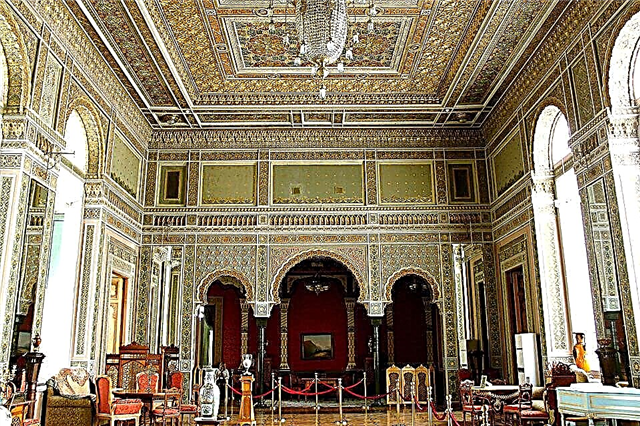
The "Musexkurs" department was opened in 1920, but it was only in 1969 that the expanded museum completely occupied the mansion in which it is located today. Previously, this house belonged to the industrialist Tagiyev. Here you can get acquainted with the history of the Azerbaijani people, moreover, from ancient times. 150 thousand coins, thousands of archaeological finds, samples of weapons ... There are unique golden objects, which are more than 4 thousand years old.
Communities of the Stone Age, antiquity, the Middle Ages, Azerbaijan in the 18-19 centuries, the First World War, the genocide of 1918 - you can walk through the halls, looking at the exhibits, for hours. Much attention is paid to the development of the economy, education and culture. The memory of ancient customs is carefully preserved. You can also see the Tagiyev Memorial Museum - the atmosphere of his apartment has been recreated. The well-known philanthropist is called the "father of the nation" by the Azerbaijanis themselves.
Modern Art Museum
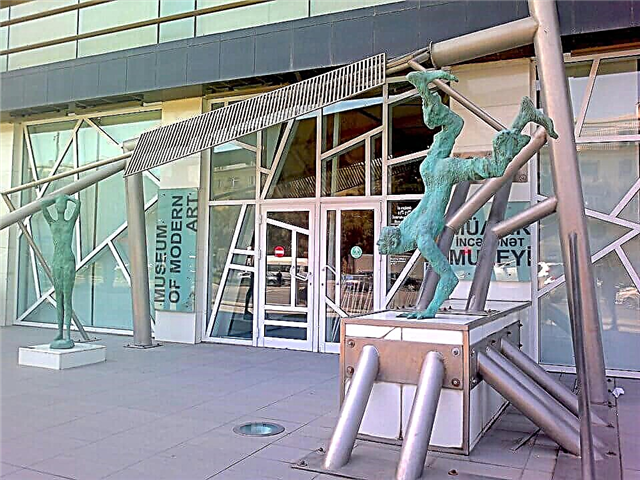
The Museum of Contemporary Art was established with the support of the Heydar Aliyev Foundation. Everything here is very unusual. The halls have no corners, the walls are inclined, the aisles are open, metal beams, structures ... It seems that everything here is moving. The author of such a memorable design is Altai Sadikh-Zade. Paintings of those authors who were not in honor of the Soviet regime are carefully preserved and exhibited, their works at that time could simply have perished.
There are also works by innovative artists of the 60-70s of the last century, as well as the works of contemporary painters. But at the same time there are canvases here by Salvador Dali, Marc Chagall, Pablo Picassov. There are a lot of pictures, but if you get tired, there is also a restaurant and a cafe in the museum. There is also an exhibition of children's works, a movie room, a library and even a bookstore where you can buy very good art books.
Museum of miniature books
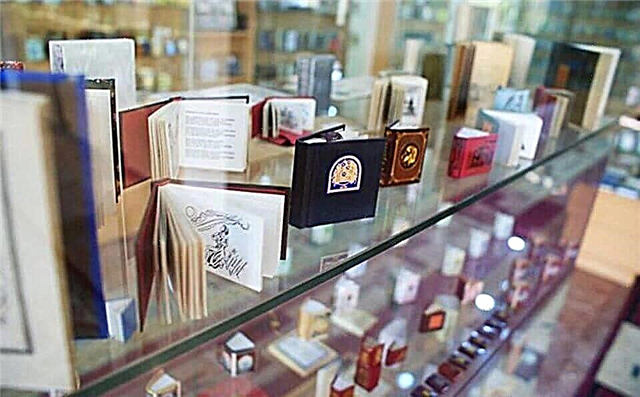
This museum is located in 1-Zamkovy Lane and occupies only one hall. But you can visit it for free, despite the fact that it is famous. For several years he appeared in the Guinness Book of Records - there was the largest collection of miniature books in the world. All exhibits belong to Zarifa Salakhova. Here you can see "Krylov's Fables", editions of 1835 - the collection began with them. As well as books donated to the hostess of the museum by prominent art workers.
The collection has traveled to different countries of the world, even to Australia. A very interesting publication is "The Oath of the President". This text was pronounced by Heydar Aliyev, in the book it is given in 3 languages. In total, the museum was visited by about 400 thousand people. There are 8700 miniature books on display here. There are even microbooks less than 1 cm in size.
Ali Shamsi workshop
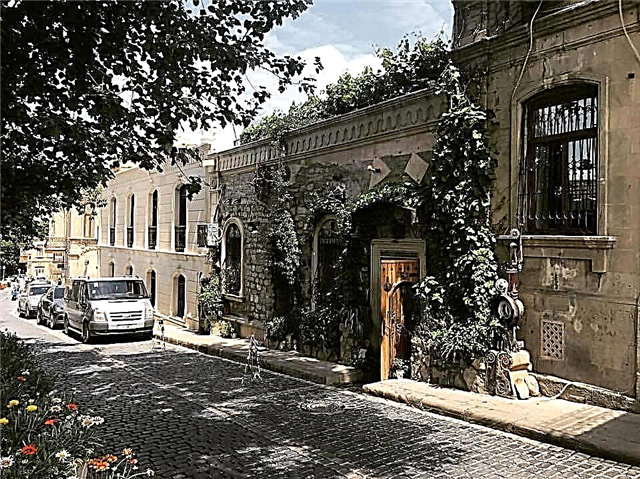
If you do not visit this place, you will definitely regret it. On Kichik-Gala street there is a tree that is already 90 years old. It faded. But the artist Ali Shamsi, in moments of inspiration, painted three female faces on it. And people began to approach the tree, hug it, take pictures. And suddenly the old tree turned green.
Uncle Ali says that this happened because we need to share our good strength with each other. You can always go to this workshop and chat with the master. He will be very happy. True, sometimes people behave badly. Not just looking at everything around. But, it happens, they put their hand in the paint, and then wipe it on the picture. Or they will steal something from the workshop.
Ali Shamsi has accumulated a lot here over the years. He brings souvenirs from distant countries, finds curiosities in the ruins of ancient buildings. But despite such incidents, the master still loves guests. There are days when hundreds of people come to the workshop per day. Among those who visited the workshop were the soloist of a fashionable German rock band, foreign artists, and even an astronaut. Every thing in the workshop is filled with warmth, each has a soul. And the master is waiting for you.
Funicular
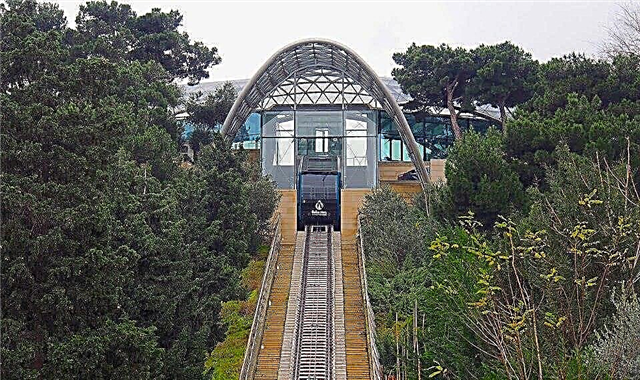
Tourists perceive the funicular as entertainment, while locals perceive it as a mode of transport. If you want to visit the observation deck and look at the city from a height, then this is the place for you. Departure - from the square on Neftyanikov Avenue. The station is a small glass pavilion. After getting off at the top stop, you can walk up to the Flame Towers and the observation deck located in Upland Park.
You can admire the city already during the trip, because the wagons offer an amazing view of the city and the Caspian Sea. The funicular was opened back in 1960. On old postcards, you can see what the cars and stations were like at that time. The modernization was carried out in the 2000s. Among other advantages, it should be noted that after it the course of the funiculars became quieter.
Flame Towers
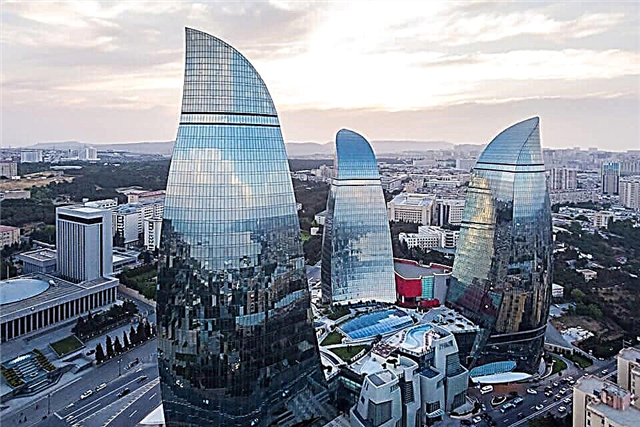
These unusual ultra-modern buildings have become a symbol of the city, and make you remember the architectural masterpieces of the UAE. Three flames can be seen from anywhere in the city. In the evening, they are beautifully illuminated, and really look like a burning bonfire. On the facades, special screens are turned on, flashes of flame are broadcast on them - an indescribable spectacle. The idea of this lighting is recognized as the best in the world. The towers contain a hotel, offices and apartments. The construction was completed in 2012 and lasted for 5 years. The height of the towers is different: 140,160,190 m.
Bibi-Heybat Mosque
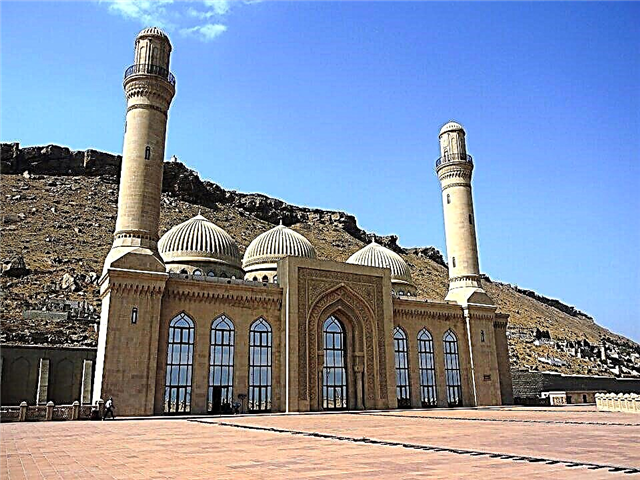
Consider this mosque old or modern? Built in the 13th century, it was destroyed in the 30s of the 20th century when there was a struggle against religion. According to the surviving sketches, a new building was erected in 1999, however, it was made larger. The same type of limestone was used as was used for construction in the old days. 2 minarets and 3 domes are the traditions of the Shivan school. Emerald and white colors give the mosque a special elegance. The walls are also decorated with calligraphic inscriptions. Mirrored windows protect from the sun. You can see very beautiful stained glass windows inside the mosque.
Mosque Tezepir
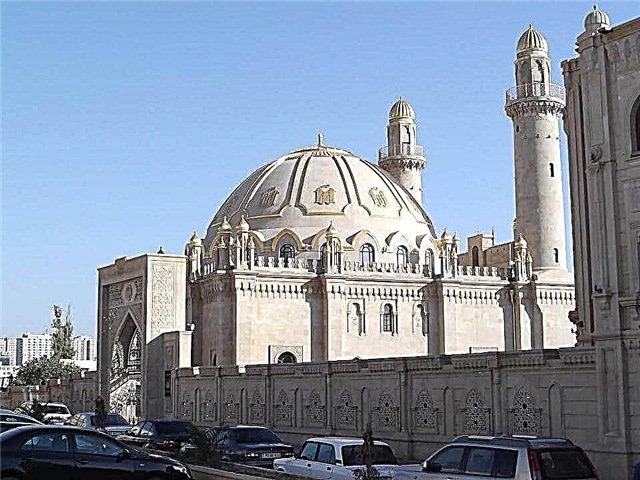
Here, too, there used to be a modest small mosque. But at the beginning of the 20th century, according to the project of Ziverbek Akhmedbekov, with the money of Nabat-khanum Ashurbekova, a new building was built. Under Soviet rule, the mosque was closed. They made a barn here, then a cinema ... Only in the years of the Great Patriotic War, when the believers got some relief, the mosque was reopened. Now they not only pray here, but also solve important issues - after all, it is here that the Administration of the Muslims of the Caucasus is located. There are male and female halls in the mosque. The decoration is very elegant - paintings by artists, marble and gold ... In a word, it is worth seeing. The floor in the mosque is heated.
Juma Mosque
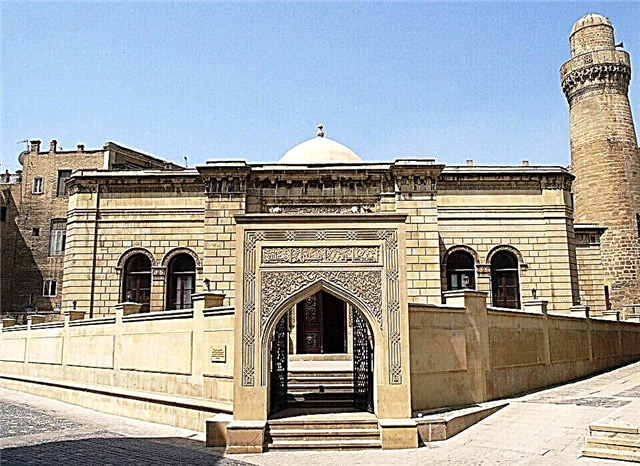
This mosque is located in the Icher Sheher district. On Friday, at noon, you will not come here - members of the Shia Muslim community pray here. At other times you can appreciate this magnificent monument of antiquity. The mosque dates back to the 12th century and the minaret to the 15th. The style echoes medieval Persian architecture. But once upon a time pagans performed their rituals on this place! At the beginning of the last millennium, Muslims took their place. Of course, mosques, like other structures, suffered during wars and natural disasters. They were restored. So the Juma Mosque was restored at the beginning of the 14th century.
In 1899, the renovation was financed by a wealthy businessman Gadzhi Dadashev. After his death, in gratitude for the good deed, he was buried on the territory of the mosque.Juma has the shape of a hexagon, the facade is decorated with delicate patterns, the door leading to the mosque is carved. Rare decorative materials are used in the interior decoration. On the masonry of the minaret, there is an inscription that tells about the extortions that were once paid by the inhabitants.
Turkish mosque
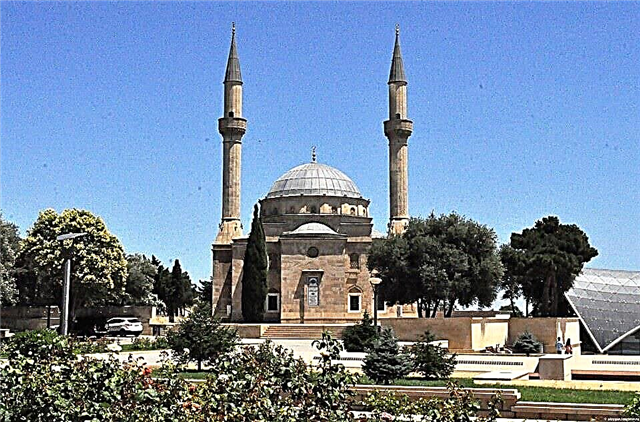
This relatively new mosque was built in 1992 thanks to the support of the Muslims of Turkey. To look at it, you need to go to the Alley of Martyrs - those who died in the struggle are buried here. There is also a project to turn the mosque into a museum dedicated to the history of Azerbaijan's struggle for independence. The name of the mosque is "Shekhidlyar". It looks majestic, visible from afar. Local residents are very sensitive to the memory of their heroes, and they honor everything connected with them. Tourists should visit here, as the mosque is not only a wonderful architectural monument, but also constitutes a single complex with the Martyrs' Alley.
TV tower
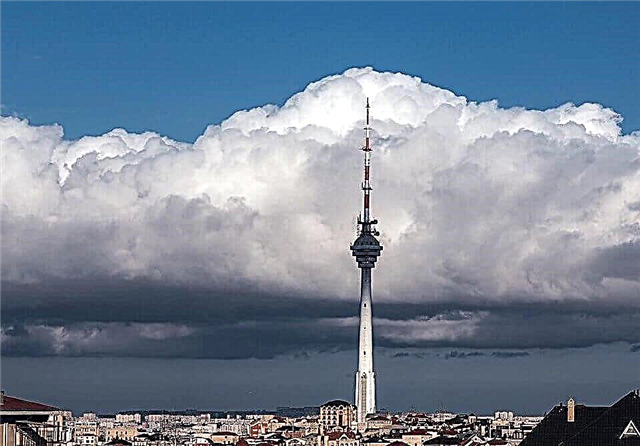
Of course, as in other cities, the TV tower is the tallest structure in the city, and it is simply impossible not to see it. The height of the tower is 310 m, which means that in terms of its size it occupies the 34th place in the world. The construction of it began in the late 70s of the last century, by order of the Ministry of Communications of Azerbaijan. The work was supposed to last 6 years, and end in 1985.
But life has made its own adjustments, and there was a break in construction. The construction of the tower was started again only in 1993 and finished in 1996. The tower was reconstructed in 2008. Now tourists have the opportunity to climb to a height of 175 m - this is the 27th floor of the tower. There is a revolving restaurant here. You can enjoy a panoramic view of Baku with a glass of fine wine and Azerbaijani dishes. Don't miss the opportunity to visit here.
Heydar Aliyev Center
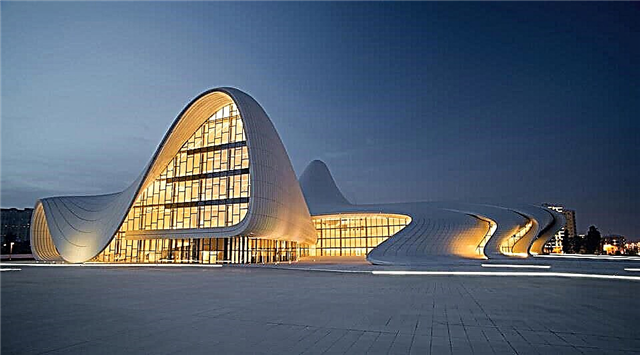
Another very unusual building that has become a real cultural center of the city. The congress center and museum, exhibition halls and numerous offices are united under one roof. The project was carried out in 2007 by the architect Zaha Hadid, and I must say - he was a brilliant success. The Heydar Aliyev Center was recognized as the best building in the world in 2014. So you must see him. The opening of the Center took place in 2012, and was timed to coincide with Aliyev's birthday.
By its shape, the building resembles a wave and has practically no straight lines. According to the architect, this symbolizes infinity, while the lines that can be seen here personify the connection between the past and the future. Another symbol is the white color of the Center. So the tomorrow of the Azerbaijani people should only be bright. In fact, the complex is not limited to one Center. It includes a park and underground car park, decorative ponds and a lake.
Once inside, you should first of all go to the information kiosks and find out what is located here and where, as well as get information about what events are taking place in the Center today. You should definitely admire the landscaped area, flowers and trees. Of course, there is a restaurant and a cafe in the Center, so there will be a place to eat. Another recommendation is to visit the exhibition “Masterpieces of Azerbaijan”. Here are collected truly unique exhibits: ancient drawings and coins, copies of old books, national costumes, musical instruments.
Fountain Square
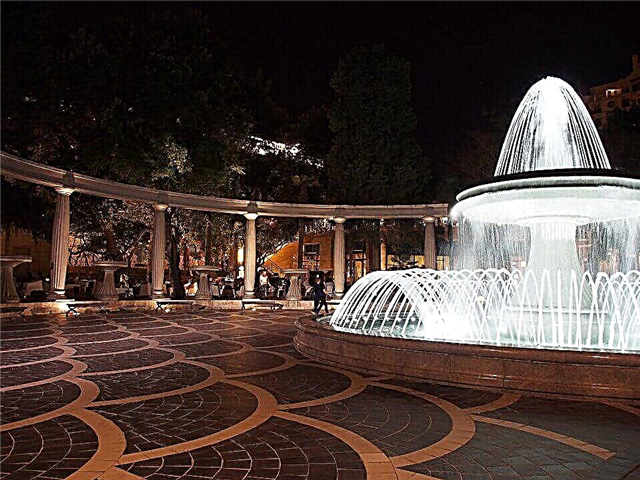
This is a historical square, and its other name is still in use - Parapet. It is surrounded by buildings significant for the city - the Nizami Museum, the Araz cinema, and an Armenian temple. The square was built in the middle of the 19th century, according to the project of Kasym-bek Hajibababekov. He also developed projects for buildings overlooking the square. At one time it was planned that a large Orthodox cathedral and a monument to Emperor Alexander II would appear here.
But the cathedral here would have been cramped, and the matter with the monument was delayed until the revolution itself, and then the question disappeared by itself. For some time the square was named after Karl Marx. And it changed radically after the reconstruction in 1984. Ornate slabs, various green spaces, and a large number of fountains appeared here. Another complete renovation was carried out in 2010. Now the square is a real work of art. Both adults and children will really like it here.
State Flag Square
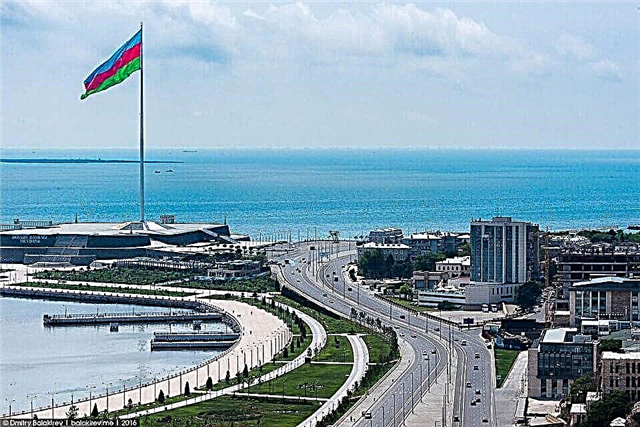
The place is very colorful. And the flag itself is staggering in size. Judge for yourself: the height of the flagpole is 162 m, the length of the flag is 75 m, the tire is 35 m, and it weighs 350 kg. The square is located next to the base of the Naval Forces. Also here you can see the coat of arms and a map of Azerbaijan, read the words of the anthem. There is also the State Flag Museum, which contains many curious exhibits related to official symbols.
The opening of the square took place in 2010. For some time, the local flagpole was considered the tallest in the world. He lost the palm a year later. In 2011, Dushanbe became the owner of the record-breaking flagpole - 165 m. There were also precedents. Once a huge flag was blown apart by the wind, and another time - during a storm the flagpole swayed so strongly that the residents of the nearest house had to be evacuated. Since then, on especially rainy days, the flag has been lowered.
Alley of Martyrs
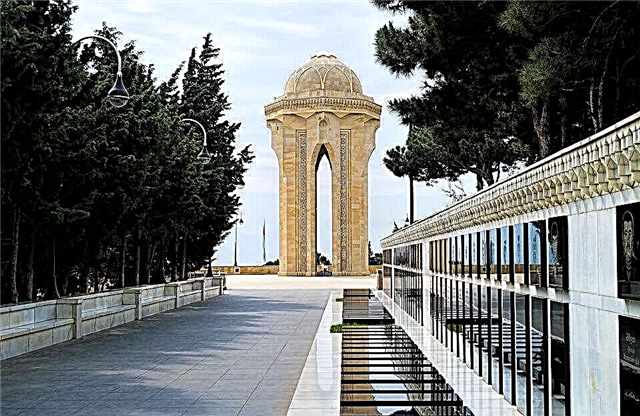
The most convenient way to get to the Martyrs' Alley is by taking the funicular. It is a place of memory and sorrow. People come here to worship the fallen. The decision to create a memorial cemetery here was made in the 90s of the last century. Those local residents who died during the clash between Soviet troops and the Azerbaijani opposition are buried here. More than a hundred graves can be seen in total. Also here lie Turkish soldiers who gave their lives in the battle for the city at the beginning of the last century. There are monuments to other heroes who fell in battles. The eternal flame is burning. The Shahid Mosque was erected.
Olympic Stadium
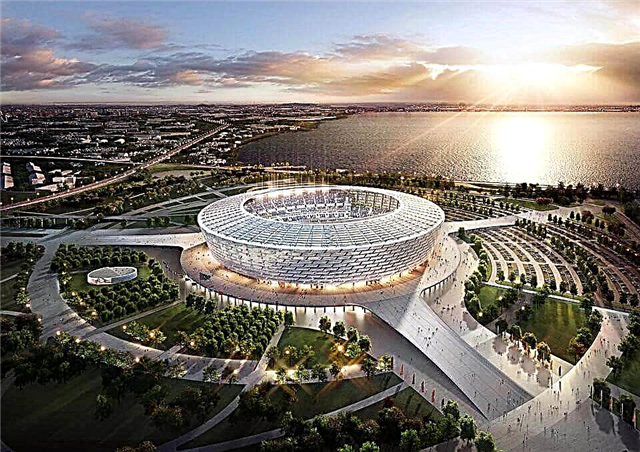
The construction of the stadium lasted almost 4 years: from June 2011 to March 2015. The project of the Turkish company TOSA was taken as a basis. The colossal structure accommodates almost 70 thousand spectators and meets all international standards. It was here that the First European Games were held in 2015. There is no doubt that competitions of world importance will continue to be held here.
The complex includes parking lots, boulevard, park. A separate building for the work of journalists is envisaged. It was the Olympic Stadium and the competitions held here that gave impetus to the restoration of the ecological purity of Boyuk-Shor Lake, which is located next door. This is a large-scale work, the lake is heavily polluted with oil. It is planned that by 2020 the ecosystem will be restored, the lake will return to its course.
Russian Drama Theater. Samed Vurgun
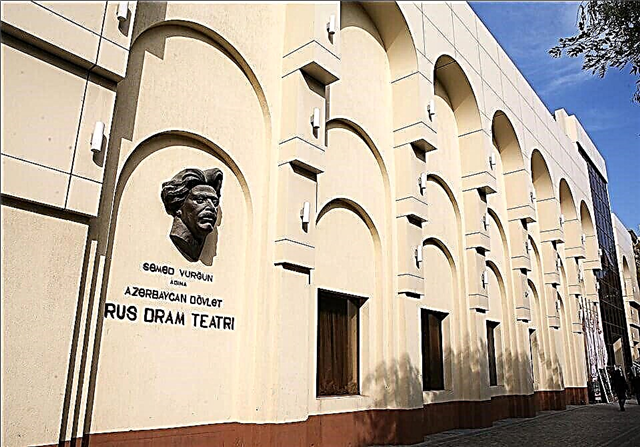
This theater has come a glorious way. In fact, he was born in December 1920. At that time, several theater companies disbanded, and the artists formed a new association. In 1923, the local authorities made a special decision, and the creative team became known as the Baku Workers' Theater. Many Russian artists came here, plays were staged that glorified the revolution and the new system. A year later, a studio was opened at the theater.
Beginning artists were taught the skills of the "Meyerholds". The career of the brilliant Faina Ranevskaya also began here. Since 1937, the theater has a different name - the Azerbaijan State Red Banner Theater of Russian Drama. And since 1956, it receives the name that it bears today. In recent years, many young Azerbaijani artists have come here. The performances are very interesting, it is worth visiting at least one of them.
Opera and Ballet Theater named after M.F. Akhundov
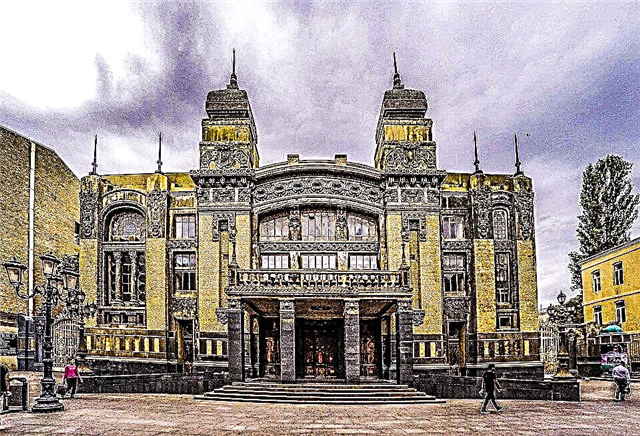
At the beginning of the 20th century, the Mailov brothers, using their own money, built and donated a luxurious theater building to the city. With a parterre and numerous boxes for the local and visiting nobility, with a balcony and galleries for spectators, it is simpler. The first performance shown on the stage was the opera Boris Godunov. Since then, both opera and ballet, operetta, drama performances, concerts have been performed here in Russian and Azerbaijani.
In 1920, the theater was renamed the Azerbaijan State Opera and Ballet Theater, and 10 years later it received its current name. Since then, world-famous stars have performed on its stage: Fyodor Chaliapin, Maya Plisetskaya, Montserrat Caballe and others. Both Azerbaijani and classical performances for adults and children are staged here.
Baku Zoo
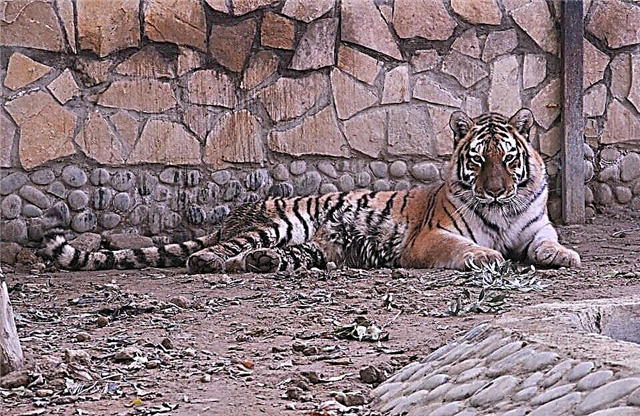
The zoo was originally opened in 1928. After the Great Patriotic War, everything had to start from scratch, and the animals evacuated from Rostov became the basis for the new zoological park. Several times the zoo was moved from place to place until a tragic event happened. A landslide that descended from the mountains killed rare animals.
After that, a new large zoo was built, it opened in 1985. A circular children's railway was laid around it, which was later dismantled - the area was built up. The symbol of the zoo is a pink flamingo - a lot of these beautiful birds were produced by the local veterinarians. In total, there are more than a thousand animals, 160 species. So you need to spend at least 3 hours to meet the zoo pets.
Ateshgah temple
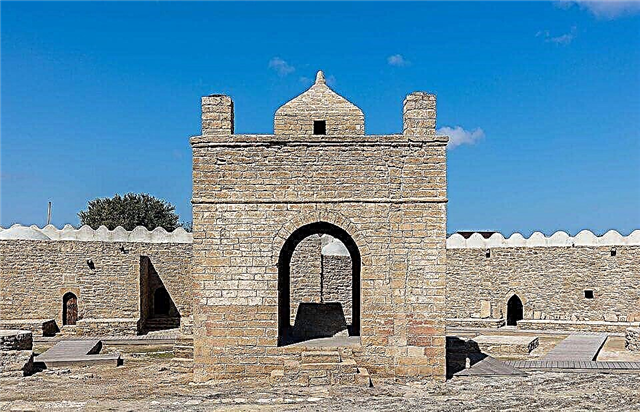
The history of the village of Surakhany since the mid-19th century is closely related to oil production. The world's first oil refinery was also built here, and Dmitry Mendeleev himself became a consultant. But tourists come to the village, mainly, then to look at the Zoroastrian temple of fire worshipers Ateshgah. It is built where flammable gas comes out of the ground to the surface. Locals call this fire "eternal", it is believed that it illuminates the path for all who seek spiritual truth.
Scientists believe that the temple was built in the 2-3 centuries AD. Its arches face the 4 cardinal points. Pilgrims from different countries came here along the Great Silk Road. Surprisingly, even Alexandre Dumas has been here. When, in the middle of the 19th century, as a result of the movement of layers of earth, access to the surface was closed for gas, pilgrims stopped visiting the temple. It was reopened in 1975 after restoration.
Gobustan reserve
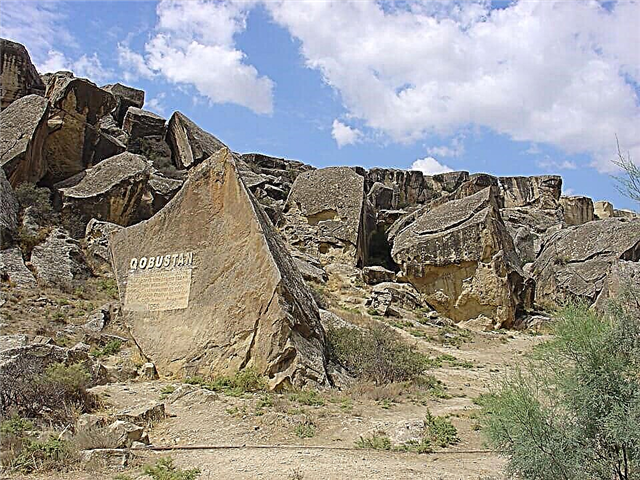
A very interesting excursion that will take several hours. The reserve is 60 km away from Baku. You can go both independently and as part of an organized excursion. What can you see here? First of all, volcanoes. The landscape seems to be "Martian", there is a feeling that you are on another planet. The earth is cracked, lifeless, the volcanoes are small and slightly larger. From time to time, they make sounds that resemble gurgling.
The second attraction of the reserve is rock paintings. There are a lot of them - several thousand. They were carried out in different periods of history. From the primitive era to the Middle Ages. You can also see an inscription from the 1st century AD. Roman legionary. Baku and its surroundings are impressive. This is a fabulous city that you should definitely visit.

